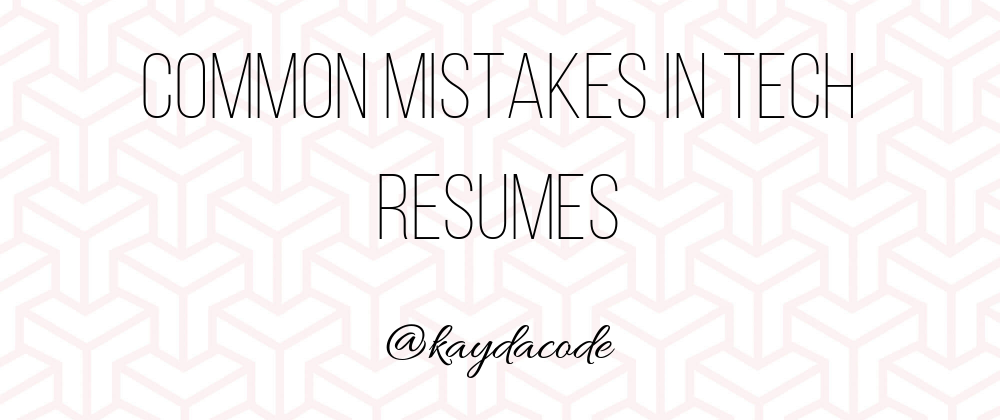Common Mistakes in Tech Resumes
Recently we broke the internet with a Resume Review dev.to post and tweet. OK – we didn’t break the internet, but my notifications were definitely fried. Overall it was an amazing thing to watch the community help each other out. I reviewed as many as I could bear before holiday, and will be continuing to go through and try to catch any that fell through the cracks.
Out of the many I reviewed and comments I’ve seen from other reviewers and more, I’ve compiled the list of the most common mistakes collectively caught.
Not having a PDF resume ready to go
Recruiters and managers pass your resume around via email and printed paper. Run it through a printer, make sure it looks good in black and white and that it’s not cut off anywhere.
Relying solely on a website
As useful as having a portfolio website or thorough LinkedIn profile is, it’s more important to have a document ready for email or print. Through this exercise, I got a glimpse into what recruiters and managers go through while filling a role and it was not pretty. I didn’t want to click through 5 pages of your website to get to your experience, I didn’t want to scroll through your GitHub projects to see what languages you knew, and I sure as heck was in no mood to watch your 10 second loading animations. You can absolutely (and should) provide a URL to your website / GitHub on your resume so someone can dive deeper into your experience. Although: anything you include on, or linked to in your resume MUST be ready for employer eyes. What would you think as a hiring manager if you went to a website that was broken or substantially incomplete? One reviewer even mentioned he loads up the JS console when looking at portfolios to look for JavaScript errors! Sneaky, sneaky 😉
One page for every ~5 (but preferably 10) years
A resume is designed to be a quick review of your skills, experience, and education. It should not be an extensive dive into the last 20 years of your life. Here’s a few quick tips to cutting down on the number of pages:
- list only relevant experience/projects
- use bullet points and not complete sentences.. remember easy to skim
- position your resume for the job you want not the job you have
- try different layouts, helps to think of your resume as a website. How would you optimize a blank page to fit everything without scrolling?
Alternatively, utilize more then half a page
It’s hard to know what to put down if you’re new to the field. But, this also gives you so much room to boast about what cool things you’ve built. What classes did you take? What group projects have you built? What languages did you use, or are currently learning? What technologies are you familiar with? Git? SVN? npm? All the acronyms?! This is your chance to highlight your accomplishments, what you’re learning, and what you’re interested in. In technology, you’re greatest skill is being able to learn new things. Show it off!
List only what you’re comfortable with
Anything listed on your resume is fair game to be asked about in an interview. For example: if you list JavaScript on your resume, because you built the CSS and HTML for a website that also used JavaScript (but you did not touch the JS), and I ask you to explain defining a constant in JS, and you cannot, I’m going to assume the rest of your skills are a lie also. With that being said, even though at one point I was very comfortable with Java, that is no longer the case and you will not find it on my resume. Set yourself up for success by firstly not lying about or exaggerating your skills.

